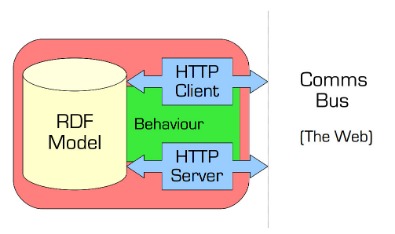What’s Data
Although this energy-saving technique seemingly provides important energy gains, an necessary point that should not be missed is that sensor nodes talk using short data packets. The shorter the packets, the extra the dominance of startup energy. Operation in a power-saving mode is energy efficient only if the time spent in that mode is bigger than, a sure threshold. There could be a number of such useful modes of operation for the wireless sensor node, depending on the variety of states of the microprocessor, memory, A/D converter, and transceiver. Each of those modes should be characterised by its energy consumption and latency overhead, which is the transition power to and from that mode. The main features of sensor MAC are periodic pay attention and sleep, collision and overhearing avoidance, and message passing.
As shown in Figure 5.1-2, the network layer within the transmitting node (i.e., a number or router) passes a community-layer datagram to the adapter that handles the sending aspect of the communication hyperlink. The adapter encapsulates the datagram in a body after which transmits the body into the communication link. At the other facet, the receiving adapter receives the whole body, extracts the network-layer datagram, and passes it to the network layer. If the hyperlink-layer protocol supplies error detection, then it is the sending adapter that sets the error detection bits and it is the receiving adapter that performs the error checking. If the hyperlink-layer protocol supplies reliable supply, then the mechanisms for dependable delivery (e.g., sequence numbers, timers and acknowledgments) are completely applied within the adapters. If the hyperlink-layer protocol offers random access (see Section 5.three), then the random entry protocol is entirely applied within the adapters.
Information Hyperlink Layer And Resolving Errors
Additionally, the fault confinement implemented within the CAN knowledge hyperlink layers precludes a single node from corrupting the communication of the others permanently. In the Internet Protocol Suite (TCP/IP), the information link layer performance is contained inside the hyperlink layer, the lowest layer of the descriptive mannequin. An necessary characteristic of the link layer is that a datagram may be dealt with by completely different link-layer protocols on the completely different hyperlinks in the path.

For example, a datagram could also be handled by Ethernet on the first hyperlink, PPP on the last link, and frame relay on all intermediate links. It is essential to notice that the companies supplied by the different hyperlink-layer protocols could also be completely different. For instance, a hyperlink-layer protocol may or could not provide reliable supply. Thus, the community layer should be capable of accomplish its finish-to-finish job within the face of a varying set of particular person link-layer services. As described by the IEEE-802 LAN specification, the function of the LLC sublayer is to manage knowledge circulate amongst various applications and providers, in addition to provide acknowledgement and error notification mechanisms.
For example, the datagram is handled by Ethernet on the primary hyperlink, PPP on the second hyperlink. When the router receives a packet, it should resolve on the basis of the community addresses along which link it ought to retransmit the packet. Some are utilized by hosts and others by network units such as switches.
Layer 2
The information hyperlink layer is Layer 2 in the Open Systems Interconnection architecture model for a set of telecommunication protocols. Data bits are encoded, decoded and arranged within the data link layer, before they’re transported as frames between two adjoining nodes on the same LAN or WAN. The knowledge link layer also determines how gadgets recuperate from collisions that may occur when nodes try and send frames at the similar time. Physical and information hyperlink layers The physical and information link layers of the community protocol stack together define a machine’snetwork interface.
- At the opposite aspect, the receiving adapter receives the complete body, extracts the community-layer datagram, and passes it to the network layer.
- MAC may discuss with the sublayer that determines who’s allowed to access the media at anybody time (e.g. CSMA/CD).
- This is finished by the pc presenting the MAC address from its network card to the switch when it first comes on-line.
The link-layer protocol defines the format of the packets exchanged between the nodes on the ends of the hyperlink, as well as the actions taken by these nodes when sending and receiving packets. Recall from Chapter 1 that the packets exchanged by a link-layer protocol are called frames, and that every link-layer body sometimes encapsulates one network-layer datagram. As we shall see shortly, the actions taken by a link-layer protocol when sending and receiving frames include error detection, retransmission, move management and random entry. Examples of hyperlink-layer protocols include Ethernet, token ring, FDDI, and PPP; in some contexts, ATM and body relay could be considered hyperlink-layer protocols as properly.
Functions Of Knowledge Link Layer
The set of devices linked on the knowledge hyperlink layer is what is usually thought of a simple “network”, as opposed to an internetwork. Regardless of which kind of MAC scheme is used for sensor networks, it certainly will need to have constructed-in energy-saving mechanisms and methods for proper administration of node mobility or failure. The most blatant means of power conservation is to show the transceiver off when it is not required.